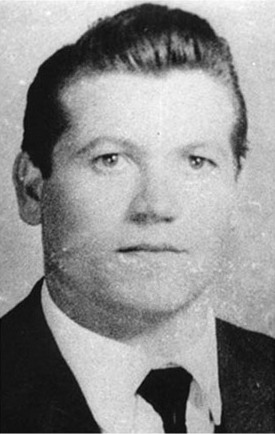
Bernardo Provenzano was an Italian mobster and chief of the Sicilian Mafia clan known as the Corleonesi, a Mafia faction that originated in the town of Corleone, and de facto the boss of bosses. His nickname was Binnu u tratturi because, in the words of one informant, "he mows people down." Another nickname was il ragioniere due to his apparently subtle and low-key approach to running his crime empire, at least in contrast to some of his more violent predecessors.
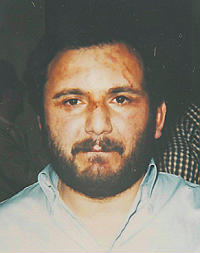
Giovanni Brusca is an Italian mobster and former member of the Corleonesi clan of the Sicilian Mafia. He had a major role in the 1992 murders of Antimafia Commission prosecutor Giovanni Falcone and businessman Ignazio Salvo, and once stated that he had committed between 100 and 200 murders. Brusca had been sentenced to life imprisonment in absentia for Mafia association and multiple murder. He was captured in 1996, turned pentito, and his sentence reduced to 26 years in prison. In 2021, Brusca was released from prison.

The Maxi Trial was a criminal trial against the Sicilian Mafia that took place in Palermo, Sicily. The trial lasted from 10 February 1986 to 30 January 1992, and was held in a bunker-style courthouse specially constructed for this purpose inside the walls of the Ucciardone prison.

Leoluca Bagarella is an Italian criminal and member of the Sicilian Mafia. He is from the town of Corleone. Following Salvatore Riina's arrest in early 1993, Bagarella became the head of the stragist strategy faction, opposing another faction commanded by the successor designate Bernardo Provenzano, creating a real rift in Cosa Nostra. Bagarella was captured in 1995, having been a fugitive for four years, and sentenced to life imprisonment for Mafia association and multiple murders.

Giuseppe "Pippo" Calò is an Italian mobster and member of the Sicilian Mafia in Porta Nuova. He was referred to as the "cassiere di Cosa Nostra" because he was heavily involved in the financial side of organized crime, primarily money laundering. He was arrested in 1985 and charged with ordering the murder of Roberto Calvi – nicknamed "Il banchiere di Dio" – of the Banco Ambrosiano in 1982, but was acquitted in 2007 due to "insufficient evidence" in a surprise verdict. After Calò was sentenced to 23 years' imprisonment as part of the 1986/87 Maxi Trial, he was sentenced to life imprisonment in 1989 for organising the 1984 Train 904 bombing. He was given several further life sentences between 1995 and 2002.
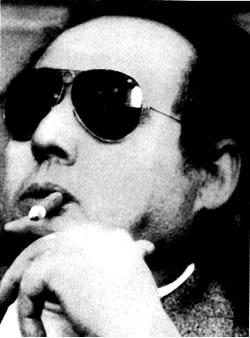
The Corleonesi Mafia clan was a faction within the Corleone family of the Sicilian Mafia, formed in the 1970s. Notable leaders included Luciano Leggio, Salvatore Riina, Bernardo Provenzano, and Leoluca Bagarella.

Giuseppe Graviano is an Italian mafioso from the Brancaccio quarter in Palermo. He also was one the men of the death squad that murdered Salvatore Contorno's relatives. He is currently serving several life sentences. He and his three brothers became members of the Sicilian Mafia Commission for the Brancaccio-Ciaculli mandamento, substituting Giuseppe Lucchese who was in prison.
Santino Di Matteo, also known as Mezzanasca, is an Italian former member of the Sicilian Mafia from the town of Altofonte in the province of Palermo, Sicily, Italy.
Pietro Tagliavia is a member of the Sicilian Mafia. Despite his young age, he is considered to be one of the upcoming leading Mafiosi of Cosa Nostra in Palermo.
Raffaele Ganci was a member of the Mafia in Sicily from the Noce neighbourhood in Palermo. He was considered to be the right-hand man of Cosa Nostra boss Totò Riina and sat on the Sicilian Mafia Commission.

Gaspare Spatuzza is a Sicilian mafioso from the Brancaccio quarter in Palermo. He was an assassin for the brothers Filippo and Giuseppe Graviano who headed the Mafia family of Brancaccio. After the arrest of the Gravianos in January 1994, he apparently succeeded them as the regent of the Mafia family. He was arrested in 1997 and started to cooperate with the judicial authorities in 2008. In his testimony he claimed that media tycoon and prime minister Silvio Berlusconi made a deal with the Sicilian Mafia in 1993 that put the country "in the hands" of Cosa Nostra.

Salvatore Riina, called Totò 'u Curtu, was an Italian mobster and chief of the Sicilian Mafia, known for a ruthless murder campaign that reached a peak in the early 1990s with the assassinations of Antimafia Commission prosecutors Giovanni Falcone and Paolo Borsellino, resulting in widespread public outcry and a major crackdown by the authorities. He was also known by the nicknames la belva and il capo dei capi.
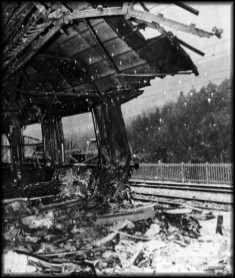
The Train 904 bombing was a terror attack which occurred on 23 December 1984, in the Apennine Base Tunnel. A bomb on the 904 express train from Naples to Milan was detonated, killing 16 and wounding 266. The bombing location was near the location of the Italicus Express bombing ten years previously.
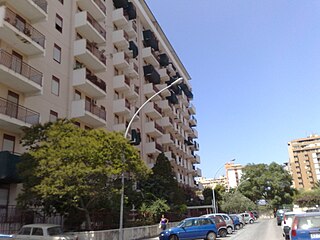
The via D'Amelio bombing was a terrorist attack by the Sicilian Mafia, which took place in Palermo, Sicily, Italy, on 19 July 1992. It killed Paolo Borsellino, the anti-mafia Italian magistrate, and five members of his police escort: Agostino Catalano, Emanuela Loi, Vincenzo Li Muli, Walter Eddie Cosina, and Claudio Traina.

The Capaci bombing was a terror attack by the Sicilian Mafia that took place on 23 May 1992 on Highway A29, close to the junction of Capaci, Sicily. It killed magistrate Giovanni Falcone, his wife Francesca Morvillo, and three police escort agents, Vito Schifani, Rocco Dicillo and Antonio Montinaro; agents Paolo Capuzza, Angelo Corbo, Gaspare Bravo and Giuseppe Costanza survived.
The term State-Mafia Pact describes an alleged series of negotiations between important Italian government officials and Cosa Nostra members that began after the period of the 1992 and 1993 terror attacks by the Sicilian Mafia with the aim to reach a deal to stop the attacks. In summary, the supposed cornerstone of the deal was an end to the so-called "massacre season" in return for a reduction in the detention measures provided for in Italian article 41-bis. 41-bis was the law by which the Antimafia pool led by Giovanni Falcone had condemned hundreds of mafia members to the so-called "hard prison regime.” The negotiation hypothesis has been the subject of long investigations, both by the courts and in the media. In 2021, the Court of Appeal of Palermo acquitted a close associate of former prime minister Silvio Berlusconi, while upholding the sentences of the mafia bosses. This ruling was confirmed by the supreme Court of Cassation in 2023.

The Circonvallazione massacre, in Italian Strage della Circonvallazione, is a Cosa Nostra attack that took place on 16 June 1982 on the Palermo ring road. The attack was directed against Catanese boss Alfio Ferlito, who was transferred from Enna to the Trapani jail, and died with the three escort carabinieri and the 22-year-old Giuseppe Di Lavore, the driver of the private company that had the transportation of prisoners, who had replaced his father. The mandator of this massacre was Nitto Santapaola, who was in a years-long war with Ferlito for predominance on the Catania territory.

The Via Palestro massacre was a terrorist attack carried out by Cosa Nostra in Milan on the evening of 27 July 1993. The explosion of a car bomb in Via Palestro, near the Galleria d'Arte Moderna, resulted in the killing of five people and the wounding of twelve.
The Graviano family is a Sicilian Mafia clan, composed of four mafioso siblings: Benedetto, Filippo, Giuseppe and Nunzia. Their father was Michele Graviano, uomo d'onore that belonged to the Brancaccio Mafia family and was murdered by Gaetano Grado in 1982.














